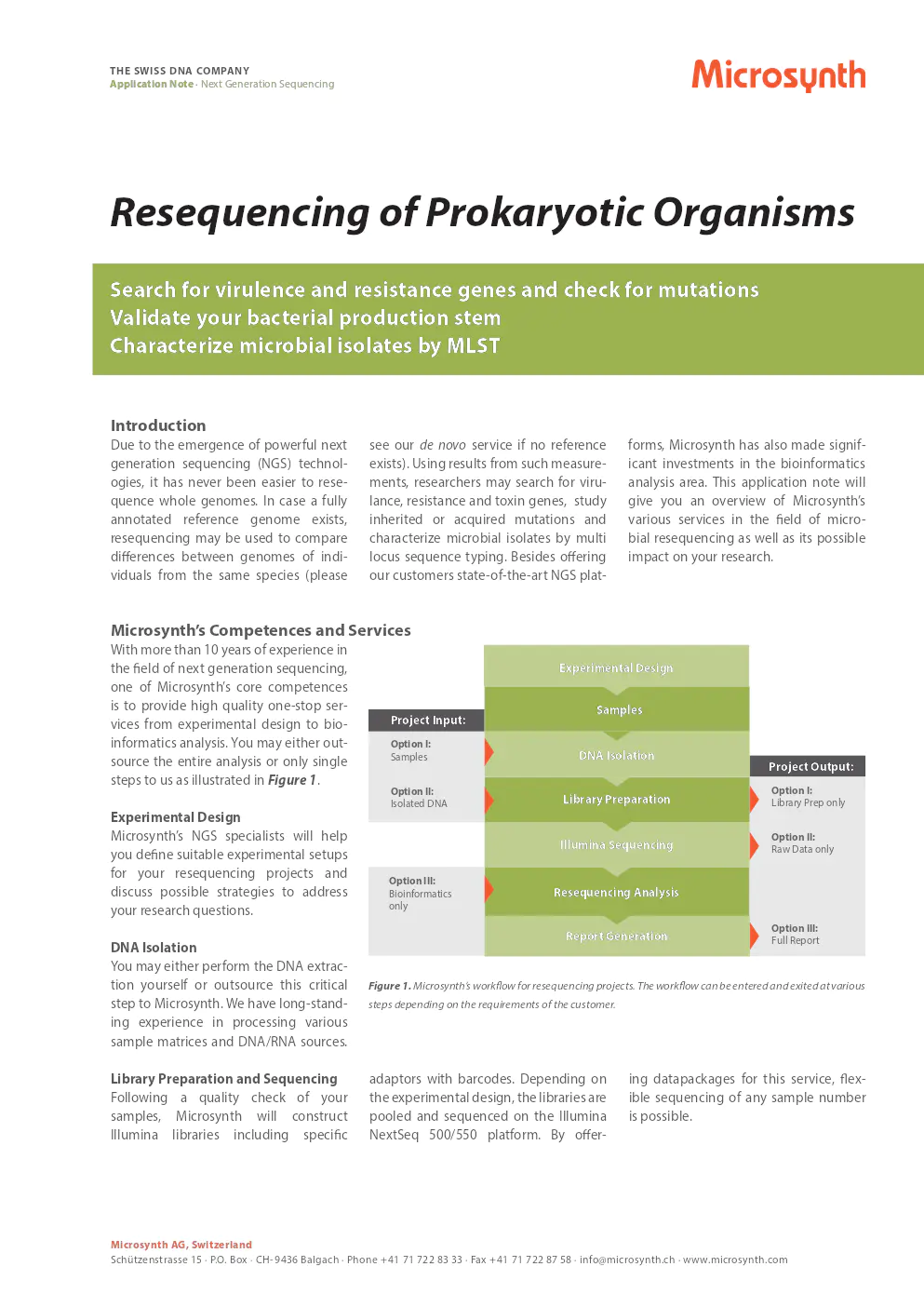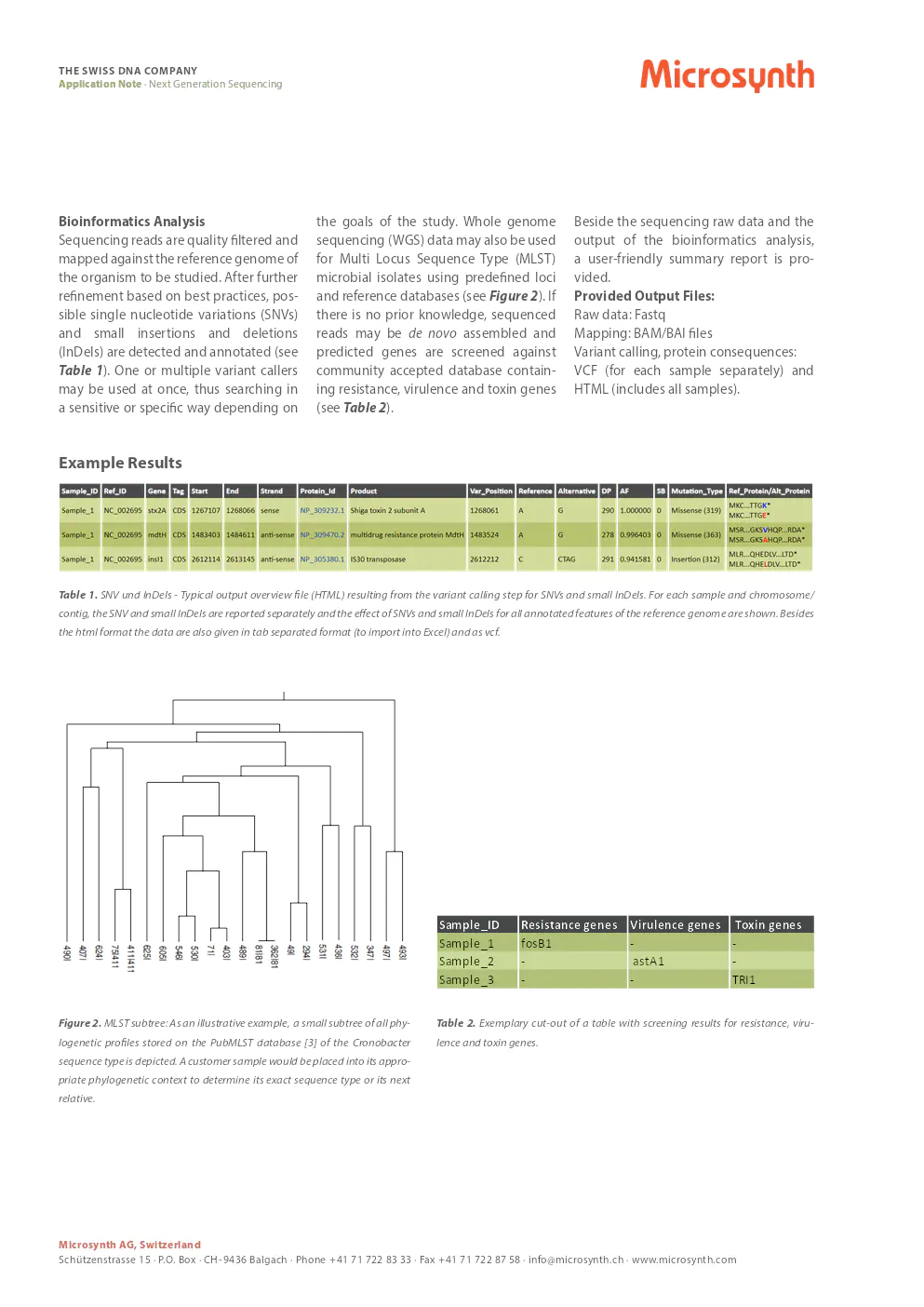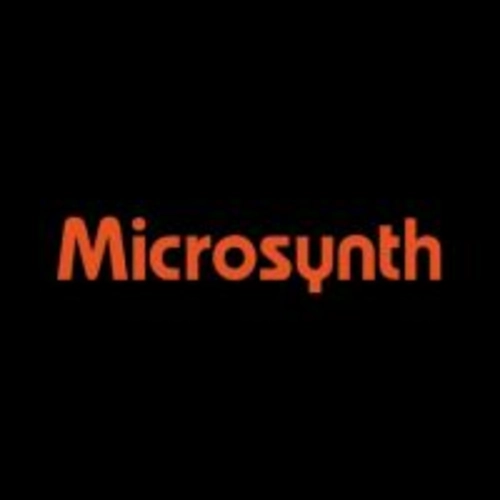note d'application sur le resequencing des organismes procaryotes
note d'application sur le resequencing des organismes procaryotes avec NGS

Contenu du document
Resequencing of Prokaryotic Organisms
- Search for virulence and resistance genes and check for mutations
- Validate your bacterial production stem
- Characterize microbial isolates by MLST
Introduction
Due to the emergence of powerful next-generation sequencing (NGS) technologies, it has never been easier to resequence whole genomes. In case a fully annotated reference genome exists, resequencing may be used to compare differences between genomes of individuals from the same species (please see our de novo service if no reference exists). Using results from such measurements, researchers may search for virulence, resistance, and toxin genes, study inherited or acquired mutations, and characterize microbial isolates by multilocus sequence typing. Besides offering our customers state-of-the-art NGS platforms, Microsynth has also made significant investments in the bioinformatics analysis area. This application note will give you an overview of Microsynth’s various services in the field of microbial resequencing as well as its possible impact on your research.
Microsynth’s Competences and Services
With more than 10 years of experience in the field of next-generation sequencing, one of Microsynth’s core competences is to provide high-quality one-stop services from experimental design to bioinformatics analysis. You may either outsource the entire analysis or only single steps to us as illustrated in Figure 1.
Experimental Design
Microsynth’s NGS specialists will help you define suitable experimental setups for your resequencing projects and discuss possible strategies to address your research questions.
DNA Isolation
You may either perform the DNA extraction yourself or outsource this critical step to Microsynth. We have long-standing experience in processing various sample matrices and DNA/RNA sources.
Library Preparation and Sequencing
Following a quality check of your samples, Microsynth will construct Illumina libraries including specific adaptors with barcodes. Depending on the experimental design, the libraries are pooled and sequenced on the Illumina NextSeq 500/550 platform. By offering datapackages for this service, flexible sequencing of any sample number is possible.
Bioinformatics Analysis
Sequencing reads are quality filtered and mapped against the reference genome of the organism to be studied. After further refinement based on best practices, possible single nucleotide variations (SNVs) and small insertions and deletions (InDels) are detected and annotated (see Table 1). One or multiple variant callers may be used at once, thus searching in a sensitive or specific way depending on the goals of the study. Whole genome sequencing (WGS) data may also be used for Multi Locus Sequence Type (MLST) microbial isolates using predefined loci and reference databases (see Figure 2). If there is no prior knowledge, sequenced reads may be de novo assembled and predicted genes are screened against community accepted database containing resistance, virulence, and toxin genes (see Table 2).
Example Results
Table 1. SNV und InDels - Typical output overview file (HTML) resulting from the variant calling step for SNVs and small InDels. For each sample and chromosome/contig, the SNV and small InDels are reported separately and the effect of SNVs and small InDels for all annotated features of the reference genome are shown. Besides the html format the data are also given in tab-separated format (to import into Excel) and as vcf.
Figure 2. MLST subtree: As an illustrative example, a small subtree of all phylogenetic profiles stored on the PubMLST database [3] of the Cronobacter sequence type is depicted. A customer sample would be placed into its appropriate phylogenetic context to determine its exact sequence type or its next relative.
Company Contact Information
Microsynth AG, Switzerland
Schützenstrasse 15 · P.O. Box · CH?-?9436 Balgach · Phone +?41 71 722 83?33 · Fax +?41 71 722 87?58 · info@microsynth.ch · www.microsynth.com


